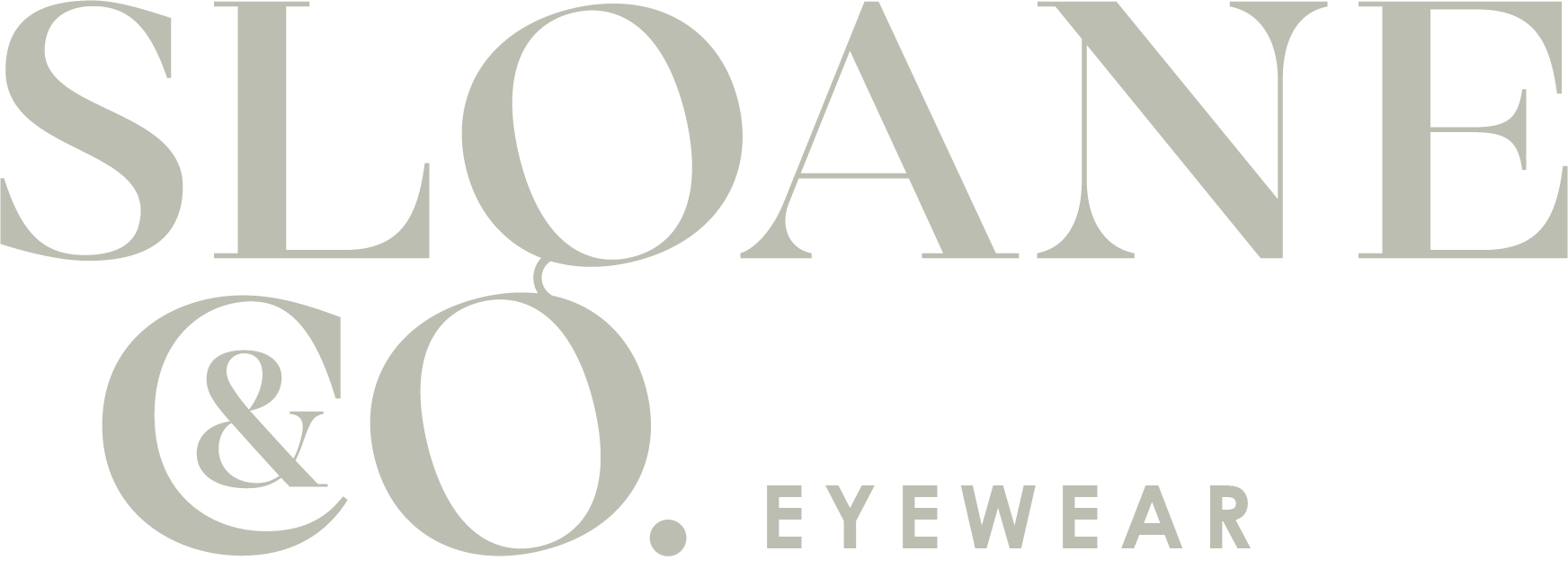Eye Exams & Prescription Check
Does Sloane & Co. offer eye exams?
We offer eye exams at our Flagship Store located at 186 Ashley Road, Hale, England, United Kingdom WA15 9SF, you can also book online by clicking this link.
How much do your exams cost?
£25 for private; NHS free.
We also offer OCT (Optical coherence tomography) a 4D scanner of the retina for early detection of disease and tumours, glaucoma. We also have a retinal camera.
How long does an exam last?
Most exams last about 20 minutes. However, if you choose to have your pupils dilated at the time of your exam, your appointment could last up to 40 minutes.
[Heads up: Dilations can cause your eyes to be sensitive to light for several hours after your exam. Best to book your appointment for a time when you can rest up afterwards!]
Is there a late policy for eye exams?
For Cancellations, please contact us at least 24 hours in advance to avoid being charged.
Does Sloane & Co. offer Eye test for contact lenses?
Yes! We offer contact lens exams. Contact Lens consultation is £25.
Can I get a contact lens fitting at Sloane & Co.?
If you currently wear contact lenses — or have worn them in the past — yes! We got you!
Do I need an appointment?
Yes, appointments are strongly encouraged. However, we would take walk-ins if the schedule allows us or if you have an emergency.
How often should I have a Comprehensive Eye Exam? What about a Contact Lens Exam?
In general, we recommend a comprehensive Eye Exam every 12-18 months. However, depending on your situation (e.g. family history of eye disease, history of problems, etc.) or if you wear glasses or over 40 years old, we recommend a comprehensive Eye Exam every 12months. Contact Lenses wearers should have a Contact Lens exam every year.
What is Prescription Check?
The Prescription Check is a process where an eye doctor assess how you’re seeing through your glasses and renew your eyeglasses prescription if need be.
What is the difference between single-vision and progressive lenses?
Single-vision lenses offer one correction throughout the entire lens (usually for distance or reading). Progressive lenses offer multiple focal corrections in one lens, providing a seamless transition from distance correction on top to reading correction on bottom. This means you can see your whole field of vision without switching between multiple pairs of glasses.
Help! I don’t know how to read my prescription!
OD:This abbreviation stands for “oculus dexter,” which is “right eye” in Latin.
OS: This abbreviation stands for “oculus sinister,” which is “left eye” in Latin.
Sphere (SPH): Sphere indicates how strong your lenses need to be. This will be accompanied by (+) or (-), which means whether you’re farsighted or nearsighted.
Cylinder (CYL): Cylinder is the correction for astigmatism. Astigmatism (thanks for asking!) means that the shape of your cornea prevents you from seeing with perfect sharpness. If you have a cylinder included on your contact lens prescription, that usually means you wear toric lenses.
ADD: This is used when you require a prescription for both distance and reading in your glasses or contact lenses. It can be shown as an ADD value with a plus (+) sign with a number or, for certain contact lens brands, a description like “high” or “low.” An ADD indicates that you may need progressive or multifocal lenses.
Here are a few additional terms you’ll see on a contact lens prescription:
Base curve (BC): For contact lenses, the base curve helps the lens fit properly. This usually is a number between 8 and 10 that measures the curve of a contact lens.
Diameter (Dia): This is the width across a contact lens in millimetres. Most contact lenses are 13–15 mm wide.
Brand: The part of the prescription that specifies which kind of contacts have been prescribed to you. For contact lenses, we are only able to fulfil the brand of lenses prescribed by your doctor.
Colour: Many contacts have a slightly visible tint to help you see them against different surfaces. (It’s common to see blue tint or handling tint listed on your contact lens packaging.) Specific contacts may have a colour tint to enhance or change your eyes’ colour while you wear them. This does not affect your vision, but it’s still essential to get a doctor’s prescription to make sure they fit your eyes properly.
What do I do if I'm experiencing issues with my contact lenses?
If you’re experiencing any irritation or other issues while wearing your contact lenses, remove your lenses and directly reach out to your doctor.
Fit
How do I know if a frame fits me?
- Your pupils should be near the centre of the lens.
- Lenses shouldn’t extend past the side of your face.
- Eyebrows should not be inside the glasses.
- When you smile, your cheeks don’t push the frames up.
- Frames shouldn’t slide down your nose.
Above all, pick what makes you look and feel good!
…
If you still have more questions, please email us. We’d love to help and we look forward to hearing from you.
